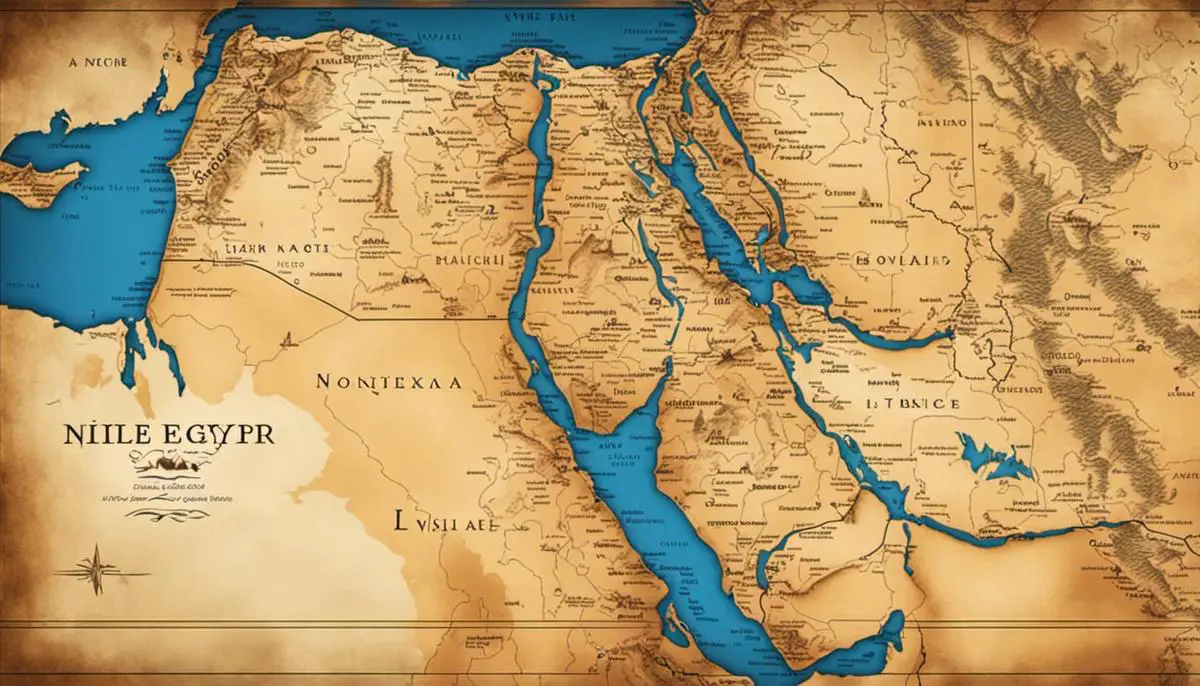The ancient civilization of Egypt stands as one of the most intriguing and influential landmarks in the annals of human history. A civilization guided by a complex hierarchical structure, intricate religious practices, and a deep sense of artistic and intellectual pursuit. This exploration peels back the layers of history, beginning with the geographical significance of Ancient Egypt. Strategically located along the Nile River basin and surrounded by deserts and valleys, its geographical endowments significantly influenced Egypt’s sustainability and development. The exploration further delves into the political structure, highlighting the roles and responsibilities of prominent Pharaohs and the concept of divine kingship, underpinning their rule. The article progresses to unveil the rich tapestry of their religion and spirituality – a complex system of gods, rituals, and beliefs that profoundly shaped everyday life. Finally, we acknowledge the extraordinary impact of Ancient Egypt on art, science and technology, celebrated through their formidable architectural accomplishments, artistic forms, and pioneering discoveries.
Geographical Significance of Ancient Egypt Civilization
Geographical Location of Ancient Egypt
Ancient Egypt was situated in the northeast corner of the African continent, bordered by the Mediterranean Sea to the north, and the Red Sea to the east. It spanned across modern-day Egypt and parts of Sudan. This geographical positioning made Ancient Egypt a significant hub of cultural interchange, as it connected Africa with the Near East and the Mediterranean.
The Nile River’s Role in Shaping Ancient Egyptian Civilization
The Nile River is the world’s longest and undeniably played a critical role in the development of Ancient Egypt. This river was the lifeblood of the civilization, providing vital resources for survival and progress such as water, fertile soil, and abundant food.
The Nile, with its predictable annual flooding, brought fertile silt to the otherwise barren desert landscape, making it possible for agriculture to flourish. This allowed for the growth and development of population centers along the river’s banks. Cultivating staple crops like wheat, barley, flax, and papyrus contributed to a sustainable economy that was primarily agrarian.
Furthermore, the Nile served as a main route for travel and communication, facilitating trade and encouraging cultural exchange and cooperation between communities. Its waters were brimming with fish, and it also attracted various fauna and flora, which added variety to the Ancient Egyptians’ diet.
Influence of the Surrounding Deserts on Ancient Egyptian Society
The deserts surrounding Ancient Egypt served as natural barriers against potential invaders, thus providing the civilization with a degree of protection and isolation. This isolation allowed the Ancient Egyptians to develop a distinctly unique culture, relatively undisturbed by outside influences.
The western and eastern deserts also provided important resources. For instance, the eastern desert was rich in valuable minerals like gold, amethyst, and copper, while the western desert housed oases that became important trade routes into the interior of Africa.
The Impact of Valleys on the Ancient Egyptian Civilization
Within the arid expanses of Ancient Egypt, valleys, particularly the Nile Valley, offered a sanctuary from the harsh desert surroundings. These fertile valleys not only provided land suitable for agriculture but also rich natural resources. The Theban Valley, for instance, held great religious and funerary significance, hosting the renowned Valley of the Kings and Valley of the Queens.
The unique geographical conditions prompted the invention of sophisticated technologies and procedures for water management, positioning Ancient Egypt as a leader in areas such as irrigation, terracing, and the building of canals and dams. Hence, the physical landscape of Ancient Egypt crucially influenced the creation of its economic, social, and cultural systems, keystones of their civilization.
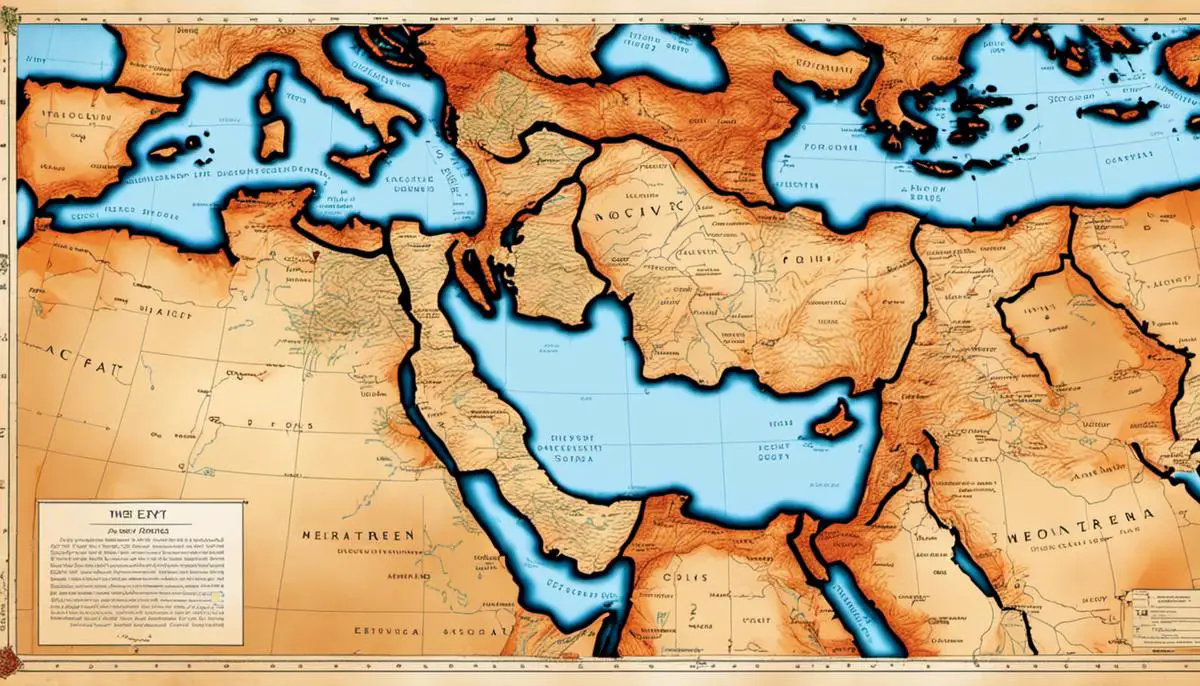
Political Structure and Prominent Pharaohs of Ancient Egypt
Understanding the Political Hierarchy of Ancient Egypt
The political architecture of Ancient Egypt stood on a theocratic framework. The nation was governed by a sole entity recognized as both the divine and earthly ruler, the Pharaoh. This dual role endowed the Pharaoh with supreme power, allowing him to make critical decisions in every sphere of society, encompassing religious, political, judicial, and military layers.
Beneath the Pharaoh, a sophisticated network of administrators, ministers, and other officials facilitated the smooth running of the kingdom. This included viziers, nomarchs, and military leaders. Acting as the Pharaoh’s deputy, the vizier was responsible for overseeing the kingdom’s administration. Nomarchs were provincial governors, each ruling over one of the various nomes (states) of Egypt. While initial appointment to this position was at the discretion of the Pharaoh, the role eventually became hereditary during the Middle Kingdom epoch.
Pharaohs and Divine Kingship
According to the ancient Egyptian concept of divine kingship, the Pharaoh was the earthly embodiment of the gods, particularly the sun god Ra. He was believed to have the divine right to rule within the cosmological framework of Ma’at, which represented truth, balance, and order. The role of Pharaoh was hereditary, usually passing from father to son.
The Pharaoh’s responsibilities included issuing laws, leading military expeditions, maintaining Ma’at, performing religious ceremonies, and overseeing the construction of monumental architecture like temples and pyramids. Their ultimate aim was to promote the prosperity and stability of Egypt.
Prominent Pharaohs of Ancient Egypt
Numerous Pharaohs had profound impacts on Ancient Egypt, but a few stand out in historical records. Narmer, who reigned around 3100 BC, is often credited as the Pharaoh who unified Egypt, marking the beginning of the Pharaonic Era or the Early Dynastic Period.
Khufu (also known as Cheops) of the Fourth Dynasty reigned around 2580 BC, and is renowned for commissioning the Great Pyramid of Giza, one of the Seven Wonders of the Ancient World.
Amenhotep III, reigning from around 1386-1349 BC, brought prosperity and artistic flourishing to Egypt during the New Kingdom period; while his son Akhenaten, attempted to introduce monotheism by worshiping a single deity, Aten.
Hatshepsut, one of the few female Pharaohs, ruled from 1473-1458 BC. She is known for expanding Egypt’s trade networks and initiating numerous building projects.
Tutankhamun, also known as “King Tut,” and Ramses II, also known as “Ramses the Great”, also left significant marks on Egyptian history.
Pharaohs and Their Impact on Egyptian Society
In ancient Egypt, the belief in divine rulership allowed the pharaohs to gather not only respect, but also unwavering obedience from their citizens. This resulted in a highly unified society, unmatched by most contemporaneous civilizations. The god-like status of the pharaohs had an immense influence on all aspects of Egyptian life, directly affecting everything from their laws and economy to their culture and religion. The magnificent structures, like pyramids and temples, that can still be seen today are lasting monuments to their extensive influences.
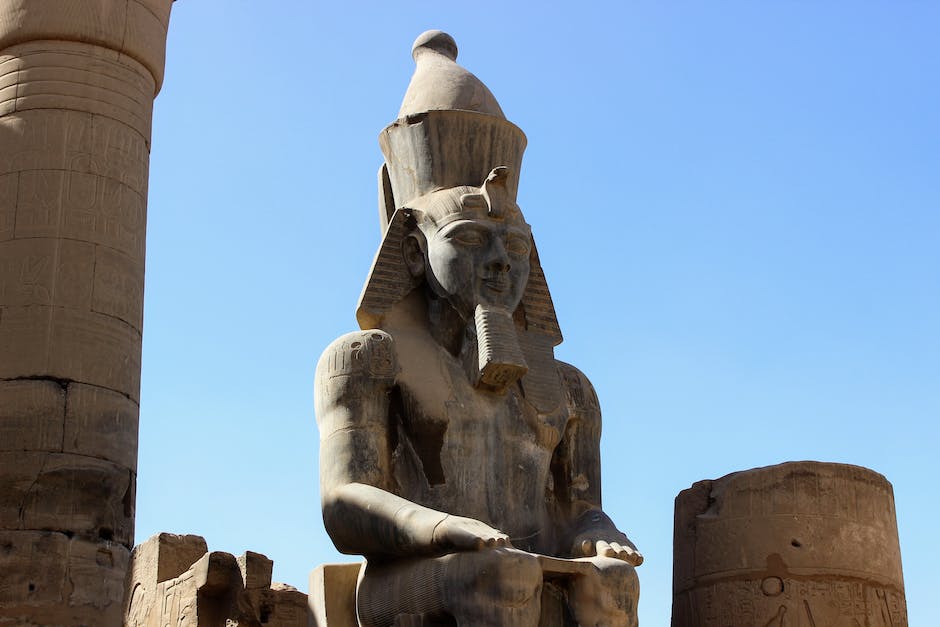
Religion and Spirituality in Ancient Egypt
The Divine Hierarchies: The Pantheon of Ancient Egypt
The religious structure of ancient Egypt was incredibly diverse and complex, with a vast collection of deities featuring prominently in both personal and state religious practices. The Egyptian civilization was predominantly polytheistic, meaning they worshipped a variety of gods, each governing different aspects of nature, human life, and the afterlife. Many of these divinities were often depicted with the characteristics of animals. Examples include Anubis, portrayed with the head of a jackal, who was responsible for matters concerning death and embalming; or Bastet, reincarnated as a lioness, who presided over home, fertility, and childbirth.
Sacred Rituals and Beliefs
Sacred rituals were pivotal in Ancient Egyptian religion, performed by priests and pharaohs for various occasions such as holidays, state affairs, or funerals. Some rituals involved offerings to gods, magical spells, and symbolic actions. The Egyptians believed in Ma’at, an ancient concept of truth, balance, order, law, morality, and justice. Maintaining Ma’at was fundamental for harmony in society and the cosmos.
Beliefs about Afterlife
The afterlife was a vital aspect of ancient Egyptian religion, as Egyptians believed that life continued beyond physical death. Mummification, tombs, and grave goods played prominent roles in the belief about the afterlife, aiming to preserve the person’s ka (life force) and ensure it would remain in good condition. The Book of the Dead, a series of spells and instructions, guided the deceased through the afterlife’s complexities, helping them avoid potential dangers.
Role of Religion in Everyday Life
Religion in Ancient Egypt was not limited to grand temples or priesthood. It was a pervasive and integral part of everyday life, shaping the culture’s norms, traditions, and annual rhythms. Aligning with religious principles, like Ma’at and upholding the gods’ worship, seeped into all aspects of life, whether one was a farmer, scribe, or pharaoh.
Temple Architecture
Egyptian temple architecture was magnificent and symbolic. Temples were seen as earthly dwellings for the gods. They were lavishly decorated with carvings, statues, and hieroglyphics illustrating religious stories, divine offerings, and sacred rituals. The Temple of Luxor and the Temple of Karnak in Thebes and the Temple of Abu Simbel are among the grandest, manifesting the Ancient Egyptians’ skill, creativity, and dedication to their deities.
Spiritual Practices
In addition to public and state-level worship, the Ancient Egyptians also engaged in personal spiritual practices. These might include amulets for protection, household shrines, prayer, initiatives to uphold ma’at in their personal conduct, and involvement in local festivals and processions.
Ancient Egyptian Religious Ceremonies
Noteworthy religious ceremonies, such as the Feast of Opet, the Sed Festival, and the Beautiful Festival of the Valley, played a pivotal role in ancient Egyptian culture. The Feast of Opet was focused on the Karnak Temple and was designed to restore the king’s influence. On the other hand, the Sed Festival served as a ritual for the pharaoh’s rejuvenation, thus prolonging his reign. The Beautiful Festival of the Valley, on the contrary, was a jovial event that paid homage to the departed, during which individuals would visit their ancestors’ tombs and pay their respects.
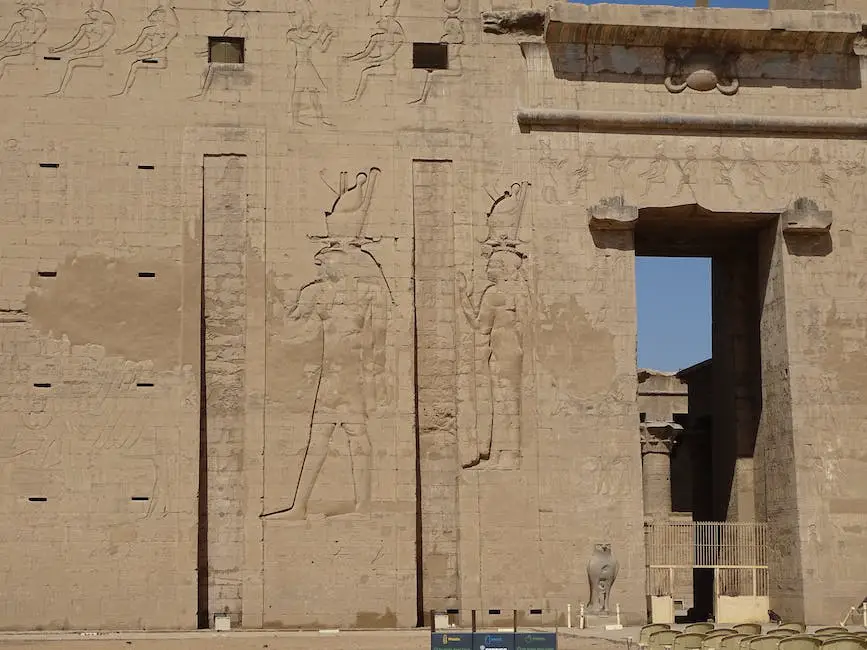
Impact of Ancient Egypt on Art, Science and Technology
The Splendor of Ancient Egyptian Art
Renowned for their vibrant, intricate, and lively works of art, the ancient Egyptians’ creations mirrored their deep appreciation of the world around them and their faith in a hometown-like afterlife. Artistic murals depicting verdant meadows, sapphire-hued lotus blooms, and gold-adorned deities were the norm. Religious and symbolic meanings were often ascribed to depictions of plant and animal life.
Depictions of mundane life, from agricultural activities to lavish feasts, were also common, offering an insight into their everyday customs. The pictorial representation typically showed the Pharaohs, priests, and nobles as considerably larger than other characters, underlining their high status and importance.
The sculptures of ancient Egypt were often characterized by tranquility, power, and permanence. Statues were often used to reflect both the physical and idealized attributes of their owners. Regardless of the practicality of the work, elements of perpetuity were a frequent theme throughout ancient Egyptian art.
Ancient Egyptian Science
The Ancient Egyptians made key advances in science. They excelled in mathematics and astronomy, which were primarily used for religious and construction purposes. Their achievements in mathematics included the concept of zero, fractions, basic arithmetic, and geometry for land division and architectural design.
The Egyptians’ knowledge of human anatomy was commendable, which was primarily due to their practice of mummification. Detailed instructions were part of funerary texts, and they developed methods on how to extract organs, use balms to prevent decomposition, and wrapping techniques for preserving bodies. This also influenced religious views of the time, considering the process was necessary for someone to reach the afterlife.
Ancient Egyptian Technology
Ancient Egyptians also made significant contributions in the field of technology, particularly in architecture and engineering technology. Pyramids are the most iconic feats of Egyptian engineering. The Great Pyramid of Giza, for instance, as one of the Seven Wonders of the Ancient World, highlights the skill and precision of the ancient architects and their understanding of geodesy.
The construction of monumental structures like pyramids required other ancillary advancements, such as developing tools and discovering the fundamentals of leverages, ramps, and cranes. Egyptians also had amazing abilities in creating tools for astronomical observations, calculating calendars, and developing accurate cubit rods for measurements.
Innovation in papyrus manufacturing and hieroglyphic writing underlined the significance of communication technology in Ancient Egypt. The Nile’s silt provided them with the materials required to make pottery, bricks, and glass.
The Lasting Impact of Ancient Egypt
The art, science and technology from ancient Egypt has left a lasting legacy on the world. Their art, filled with symbolism and a sublime aesthetic, is still appreciated for its beauty and profundity. The scientific advancements, particularly in mathematics and medicine, laid the foundation for understanding the world. In architecture and technology, the grandeur of their creations still inspire awe and instigate the drive for modern humanity to push the boundaries of what’s possible.
In the end, Ancient Egyptian civilization has played a defining role in shaping various forms of art, science, and technology that we see today.
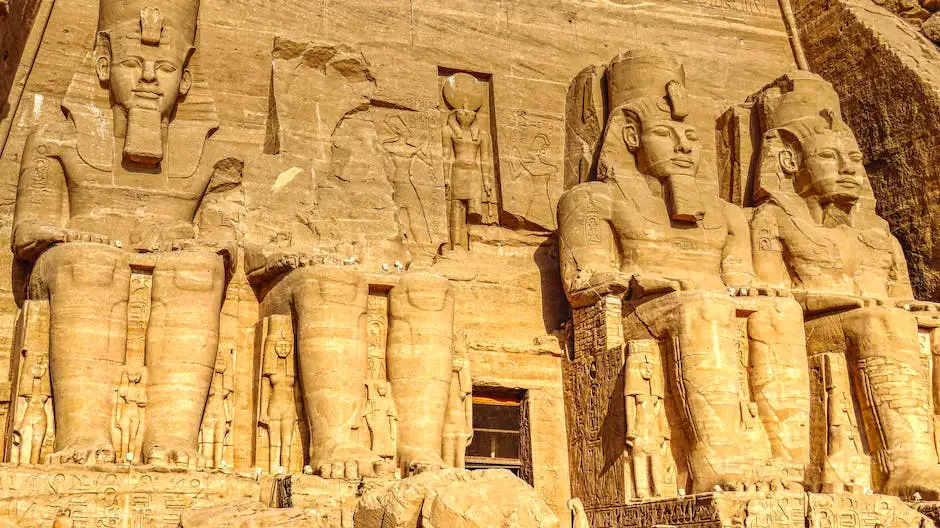
The legacy of the Ancient Egyptian civilization is truly awe-inspiring, reflected not only in their monumental architectural marvels, but also in their innovative scientific and technological advancements. This extensive exploration into the civilization reveals the intricate ties between their geographical location, political structure, religious practices, and their contributions to art, science and technology. Egypt is a testament to the profound and transformative influence of geography on a civilization’s development. The Pharaohs, with their divine ethos, established a unique sociopolitical structure. Their spiritual practices and beliefs not only fashioned their way of life but also set the stage for their incredible architectural and artistic feats. The influence of this fascinating civilization continues to resonate today, serving as a source of inspiration and a testament to humanity’s potential for intellect, creativity and resilience.
![]()
